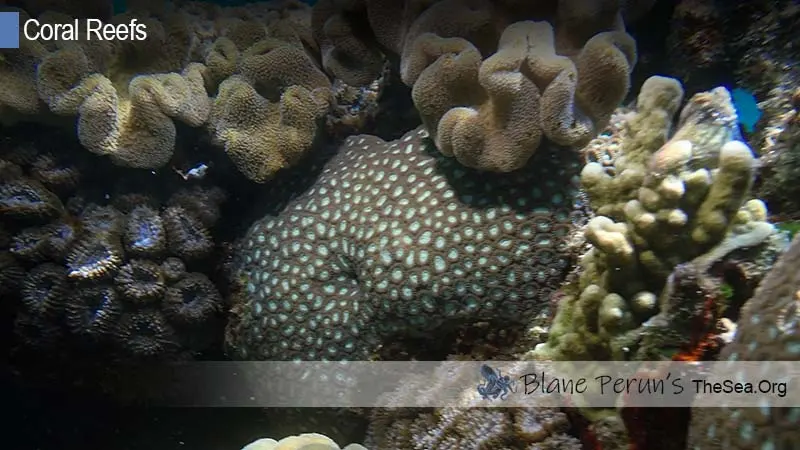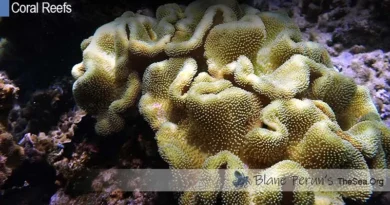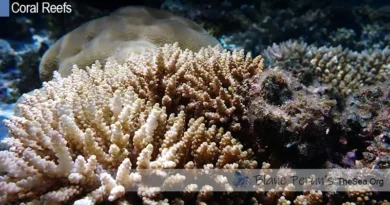How Have Coral Reefs Changed Over Time
Table of Contents
Marine biologists often look for a clear answer to the question “how have coral reefs changed over time, and what does that mean for the future of the Earth?” Coral reefs are some of the oldest most unique living creatures on the face of the planet, and their evolution is a clear example of what it takes to survive 540 million years through the early phases of developing life. Today, coral reefs are in trouble, in large part due to human intervention, but also because of the many natural changes that the Earth is going through.
How have coral reefs changed over time, and what are the most important considerations regarding their evolution? First it’s important to note that coral reefs have been around since the Paleozoic era, and have lived through the earliest periods of the development of multicellular life. They started out as a solitary creatures, however, changes in their environment have forced them to evolve. In time, they have become similar to the species of reef we all know today. While there were many millions of years of hiatus after some of the notable extinction periods – including the Ordovician–Silurian Extinction Event, the Permian-Triassic Extinction Event and the Cretaceous-Tertiary Mass Extinction – coral reefs have survived each time, and after the formation of the Great Barrier Reef 20 million years ago, they continued to thrive until the age of humanity came along.
When asking how coral reefs have changed over time, we have to admit that the modern era is one of the darkest periods in the history of coral reef formations on planet Earth. Despite surviving mass extinction events, coral reefs are now in genuine danger because of current issues like global warming and humanity’s industrial and technological expansion. Our technology has led us on a path that already destroyed many natural habitats around the world and drove numerous wildlife and marine life species to extinction. As a result of these factors, 70% of Japan’s coral reefs are already dead, the Great Barrier Reef’s ecosystem is dying fast, and 73% of all surveyed reef systems in the world have suffered bleaching events just last year.
Is there hope for coral reefs? According to recent data, coral reef formations will pass the point of no return as early as 2040. This means that, once we reach that time period, all corals will face a terminal decline that will lead to their complete eradication until the end of the century. If that happens, the question “how have coral reefs changed over time” will be largely irrelevant, since it will probably take many millions of years before coral formations can return once more.
How Have Coral Reefs Changed Over Time
Coral reefs, often referred to as the rainforests of the sea, are among the most diverse and vital ecosystems on our planet. Over time, they have undergone significant changes due to various environmental and anthropogenic factors. This article delves into the transformation of coral reefs, exploring the factors that have contributed to their evolution and the current state of these aquatic marvels.
The Impact of Climate Change on Coral Reefs
Temperature Changes and Coral Bleaching
One of the most profound changes in coral reefs over time has been caused by climate change. As global temperatures rise, so do ocean temperatures. This increase in temperature leads to a phenomenon known as coral bleaching. Coral bleaching occurs when corals, stressed by warm water temperatures, expel the symbiotic algae living in their tissues, causing them to turn white. This not only affects the aesthetic beauty of these reefs but also their ability to sustain marine life. The loss of algae, which is a primary food source for corals, hampers their growth and reproductive capabilities.
Human Activities and Their Effects
Pollution and Overfishing
Apart from climate change, human activities have significantly altered the face of coral reefs. Pollution, especially from agricultural runoff and sewage, introduces harmful nutrients and sediments into the ocean, drastically affecting the health of coral reefs. These pollutants can smother corals, blocking the sunlight they need to survive. Moreover, overfishing and destructive fishing practices have disrupted the delicate balance of marine ecosystems. The removal of key species, such as herbivorous fish, allows for the overgrowth of algae, which competes with corals for space and resources. This change in the dynamics of the marine food web further exacerbates the decline of healthy coral reefs.
FAQs on Coral Reef Changes
1. What is the primary cause of coral bleaching?
The primary cause of coral bleaching is the rise in sea water temperatures. When water is too warm, corals expel the algae living in their tissues, leading to a whitened, bleached appearance. This process can be fatal to corals if the stressful conditions persist.
2. How does pollution affect coral reefs?
Pollution, particularly from agricultural runoff and sewage, introduces excess nutrients and sediments into the ocean. This can lead to the overgrowth of algae that competes with corals for space and sunlight, as well as smothering the corals directly, hampering their growth and survival.
3. Are human activities contributing to changes in coral reefs?
Yes, human activities such as pollution, overfishing, and destructive fishing practices have significantly contributed to the changes and decline of coral reefs. These activities disrupt the balance of marine ecosystems and directly harm the health and sustainability of coral reefs.
4. Can coral reefs recover from bleaching?
Coral reefs can recover from bleaching if the stress caused by elevated water temperatures is short-lived and if they are in a healthy, supportive environment. However, frequent or prolonged bleaching events can lead to the permanent loss of coral reefs.
5. What role do herbivorous fish play in coral reef ecosystems?
Herbivorous fish play a crucial role in maintaining the balance of coral reef ecosystems. They help control algae growth, ensuring that corals have enough space and sunlight to thrive. Overfishing of these species can lead to an imbalance, allowing algae to overgrow and outcompete corals.




